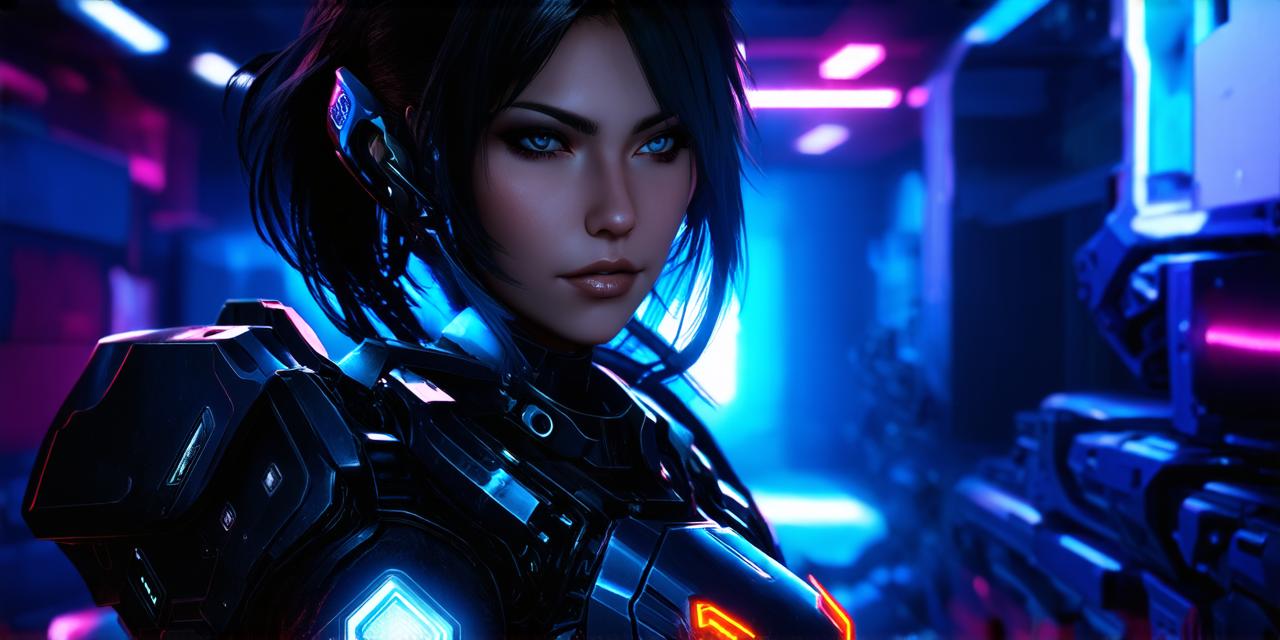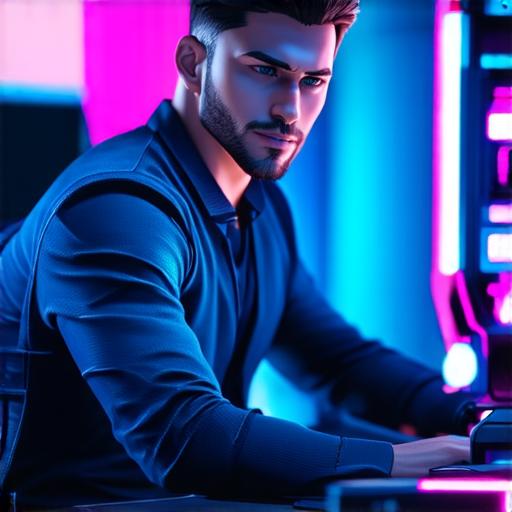Table of Contents
- Introduction
Introduction
Creating 3D video game characters can be a complex process, requiring a combination of artistic skills, technical knowledge, and creative thinking. In this article, we will walk you through the entire process from conceptualization to rigging and animation, using practical examples and expert advice along the way. By following these steps, you’ll be able to create 3D video game characters that are not only visually stunning but also bring depth and emotion to your game.
Conceptualization: Gathering Inspiration
The first step in creating any 3D character is conceptualization. This involves gathering inspiration, brainstorming ideas, and creating sketches or rough designs that will serve as the foundation for your character model. Here are some tips to help you get started:
- Start by watching other video games and studying the characters you like. Pay attention to their design elements, such as the shape, silhouette, color palette, and facial expressions.
- Create rough sketches or wireframes of your character ideas using pencil and paper or a digital sketching program. This will help you visualize different designs and get feedback from others.
- Think about the personality and backstory of your character. What are they like? What motivates them? What is their role in the game? Answering these questions can help guide your design choices and make your character more relatable to players.
Creating 3D Models: Techniques and Tools
Once you have a concept for your character, it’s time to start creating the 3D model. Here are some tips and techniques to get you started:
Choosing the Right Software
There are many software options available for creating 3D models, each with its own strengths and weaknesses. Some popular options include:
- Blender: A free and open-source 3D modeling software that is widely used in the gaming industry.
- Maya: A commercial 3D modeling software that is known for its advanced features and flexibility.
- ZBrush: A professional 3D sculpting software that is often used for creating detailed characters and props.
When choosing software, consider your budget, technical skill level, and the specific needs of your project.Sculpting and Texturing
Sculpting is the process of using a digital pen or brush to create organic shapes and add detail to your character model. This can be done in any 3D modeling software, but ZBrush is particularly well-suited for this task.
Once you have sculpted your character, it’s time to apply textures to give it a more realistic appearance. Textures can include skin tones, hair styles, clothing patterns, and other visual elements that add depth and detail to your model. In Blender, you can use the node-based texture painting system to create complex texture effects.Rigging and Rendering
Rigging is the process of creating a skeleton for your character model that will allow it to move and interact with its environment. This can be done in any 3D modeling software, but Maya is particularly well-suited for this task due to its advanced rigging tools.
Rendering is the process of generating an image or video from your 3D model. This involves setting up lighting scenes, adding textures and effects, and adjusting various rendering settings to achieve the desired look and feel. In Blender, you can use the Cycles renderer for high-quality images and the Eevee renderer for real-time previews.Animation: Bringing Characters to Life
Once your character model is complete, it’s time to bring it to life through animation. Here are some tips and techniques to get you started:
Animating 3D Models
Animating a 3D model involves creating keyframes that define the movement of the character at various points in time. These keyframes can then be interpolated to create smooth, fluid animations. In Blender, you can use the Dope Sheet to visualize and edit your animations.
Creating Expressions and Animation States
Expressions are used to define facial expressions and other dynamic elements in your character model. For example, you might create an expression for a happy smile or a sad frown. In Maya, you can use the Expressions Editor to create custom expressions and animations.
Rigging for Animation
Rigging involves creating a skeleton for your character that will allow it to move and interact with its environment. This includes setting up joints and constraints, assigning bones to different parts of the character model, and defining the range of motion for each joint. In Blender, you can use the Rigging Tools to create complex rigs for animating characters.
Lighting and Texturing: Enhancing the Visual Appeal
Finally, it’s time to enhance the visual appeal of your character model through lighting and texturing. Here are some tips and techniques to get you started:
Creating Lighting Scenes
Lighting can make or break a 3D scene, so it’s important to take the time to create effective lighting scenes. This involves setting up light sources, adjusting their intensity and color, and positioning them to highlight key elements in the

